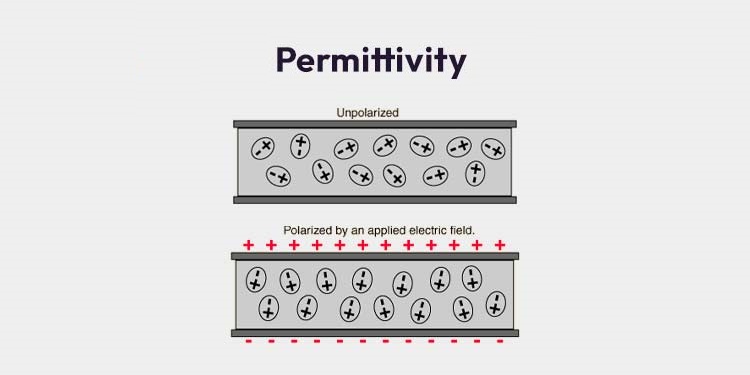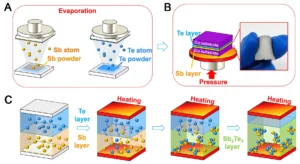Permittivity is a fundamental concept in physics, particularly in electromagnetism, that characterises how a material responds to the presence of an electric field. It plays a crucial role in understanding the behaviour of electric fields, capacitors, dielectrics, and electromagnetic waves. In this article, we will delve into the definition, detailed concepts, formulas, examples, values, and applications of permittivity in physics.
Definition:

Permittivity, denoted by the symbol ε (epsilon), is a measure of a material’s ability to permit the flow of an electric field. It quantifies how much the electric field inside a material is reduced compared to the electric field in a vacuum or free space. Permittivity is a property of the material and varies depending on its composition, structure, and physical state.
Detailed Concepts:
- Electric Permittivity (ε0): Electric permittivity of free space, denoted by ε0 (epsilon naught), is a fundamental physical constant representing the permittivity of a perfect vacuum. Its value is approximately 8.854 × 10−12 farads per meter (F/m).
- In vacuum, the electric field propagates without any attenuation or distortion.
- Relative Permittivity (εr): Relative permittivity, also known as dielectric constant, is the ratio of the permittivity of a material to the permittivity of free space. It is denoted by εr (epsilon sub r) and is dimensionless. Materials with higher relative permittivity are better at storing electrical energy in an electric field compared to vacuum. Common materials with high relative permittivity include glass, ceramics, and plastics.
Formula:
The relationship between electric displacement field (D), electric field (E), and permittivity (ε) is given by Gauss’s law in differential form:
∇ ⋅ 𝐷 = 𝜌f
where,
- ∇ · D is the divergence of the electric displacement field,
- ρf is the free charge density.
In linear, isotropic, and homogeneous materials, this relationship can be expressed using constitutive relation as:
D = ε E
where,
- D is the electric displacement field (C/m²),
- E is the electric field (V/m),
- ε is the permittivity (F/m).
For capacitors, the capacitance (C) is determined by the permittivity of the material between the plates, the area of the plates (A), and the distance between them (d), according to the formula:
𝐶 = 𝜀 𝐴 / 𝑑
Examples:
Air: Air has a relative permittivity close to 1, indicating that it has a weak ability to store electrical energy compared to other materials. Hence, air is often used as a dielectric material in capacitors.
Water: Water has a relatively high permittivity, around 80, which makes it an excellent medium for the propagation of electromagnetic waves. This property is utilized in various applications, including antennas and radar systems.
Capacitors: Capacitors consist of two conductive plates separated by a dielectric material. The permittivity of the dielectric affects the capacitance of the capacitor and its ability to store charge.
Values of permittivity for different materials:
The values of permittivity vary widely depending on the material. For example:
- Vacuum: ε0 ≈ 8.854 F/m
- Air: εr ≈ 1
- Water: εr ≈ 80
- Glass: εr ≈ 4-10
- Diamond: εr ≈ 5.5
Applications in Physics:
Capacitors: Permittivity plays a crucial role in determining the capacitance of capacitors, which are essential components in electronic circuits for storing and regulating electrical energy.
Dielectric Materials: Permittivity influences the behaviour of dielectric materials used in insulators, capacitors, and waveguides.
Electromagnetic Wave Propagation: Permittivity affects the speed and propagation of electromagnetic waves through different mediums, influencing communication technologies such as radio, television, and wireless networks.
Optics: In optics, permittivity influences the refractive index of materials, affecting the propagation of light and the design of optical devices like lenses and fibres.
Conclusion:
Permittivity is a fundamental property of materials that governs their interaction with electric fields. Understanding permittivity is crucial for various applications in physics, including electronics, telecommunications, and optics. By comprehending the concepts, formulas, examples, values, and applications of permittivity, physicists and engineers can design and optimise devices and systems for diverse technological advancements.




